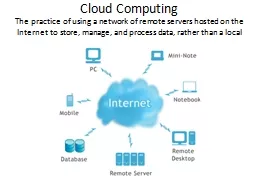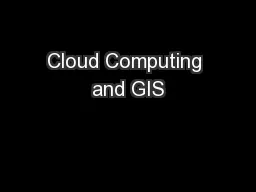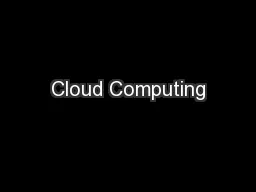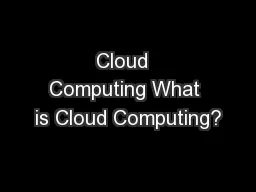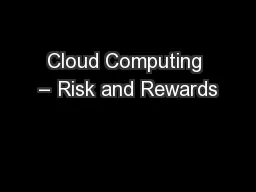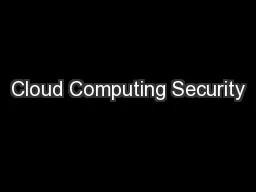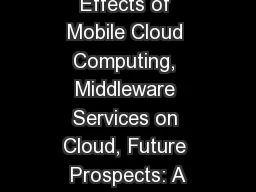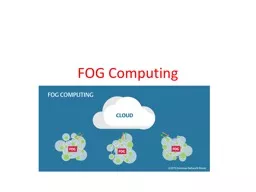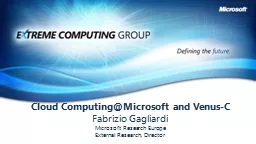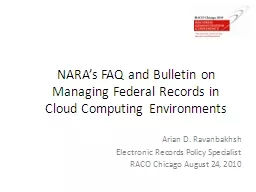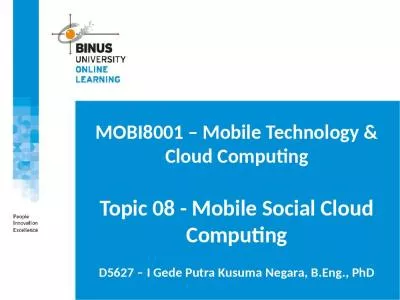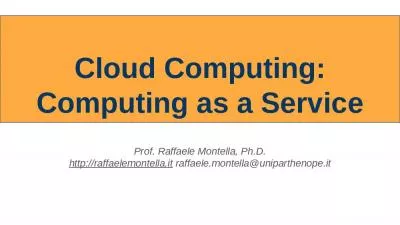PPT-Cloud Computing The practice of using a network of remote servers hosted on the Internet
Author : imetant | Published Date : 2020-06-20
Cloud Components 1 Clients Clients are the devices that the end users interact with to manage their information on the cloud Mobile Thin Thick 2 Datacenters The
Presentation Embed Code
Download Presentation
Download Presentation The PPT/PDF document "Cloud Computing The practice of using a ..." is the property of its rightful owner. Permission is granted to download and print the materials on this website for personal, non-commercial use only, and to display it on your personal computer provided you do not modify the materials and that you retain all copyright notices contained in the materials. By downloading content from our website, you accept the terms of this agreement.
Cloud Computing The practice of using a network of remote servers hosted on the Internet: Transcript
Download Rules Of Document
"Cloud Computing The practice of using a network of remote servers hosted on the Internet"The content belongs to its owner. You may download and print it for personal use, without modification, and keep all copyright notices. By downloading, you agree to these terms.
Related Documents

